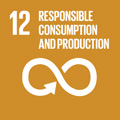- Docente: Luca Lambertini
- Credits: 6
- SSD: SECS-P/01
- Language: English
- Teaching Mode: Traditional lectures
- Campus: Bologna
- Corso: Second cycle degree programme (LM) in Applied Economics and Markets (cod. 5969)
-
from Apr 07, 2025 to May 21, 2025
Learning outcomes
After taking the course, the student is expected to be acquainted with: (i) basic game theory instruments, (ii) the evolution of the theory of industrial organization, including the basic oligopoly models of Cournot, Bertrand and Stackelberg, and (iii) the manifold issues connected with the impact of firms' unregulated strategic behaviour on the environment and natural resources.
Course contents
- Elements of noncooperative game theory, and solution concepts
- The basics of oligopoly theory: price and quantity competition and product differentiation
- Supply function competition
- Mergers: private and social incentives
- Cartels: implicit collusion and the theorem
- Discrete choice theory: horizontal and vertical differentiation
- R&D, process and product innovation and the indirect debate between Schumpeter and Arrow
- Network externalities, technological standars and switching costs
- Sketch of the environmental implications
Readings/Bibliography
The course id supported by slides, alongside withspecific papers suggested during the lectures.
The topics treated in the course can be found in textbooks at different levels, among which:
Belleflamme, P. and M. Peitz (2010), Industrial Organization, Cambridge, Cambridge University Press
Martin, S. (2002), Advanced Industrial Economics. Second Edition, Oxford, Blackwell
Shy, O. (1995), Industrial Organization, Cambridge, MA, MIT Press
Tirole, J. (1988), The Theory of Industrial Organization, Cambridge,
MA, MIT Press
Teaching methods
Class lectures, plus remote video connection, if needed, depending on circumstances. Formal analysis of existing models. All mathematical aspects will be illustrated in class.
Students will become familiar with the construction of basic theoretical models and the selective addition of ingredients required for the analysis of extensions and applications, as well as the resulting normative implications.
Assessment methods
The exam has the objective of verifying the candidate's knowledge of theoretical concepts as well as her/his ability to interpret policy implications.
The exam can be taken in two different forms:
I. A written exam in class, 2 h. The text includes 4 questions, each granting at most 10 points. The candidate may choose any 3 out of 4.
II. A written exam in class, 1 h and 20'. The text is the same but the candidate is supposed to answer 2 questions and complete the exam with an essay on a specific theme chosen in agreement with the teacher.
The maximum possible score is 30 cum laude, in case all anwers are correct, complete and formally rigorous.
The grade is graduated as follows:
<18 failed
18-23 sufficient
24-27 good
28-30 very good
30 cum laude excellent
Teaching tools
The slides used during the course will appear in its web page, together with the link to the video of each lecture as soon as it becomes available (if any). The material for essays will be chosen on a case by case basis.
Office hours
See the website of Luca Lambertini
SDGs



This teaching activity contributes to the achievement of the Sustainable Development Goals of the UN 2030 Agenda.
